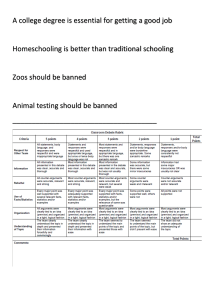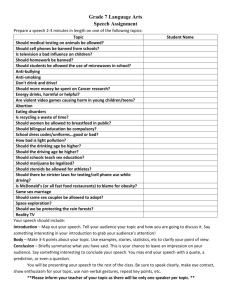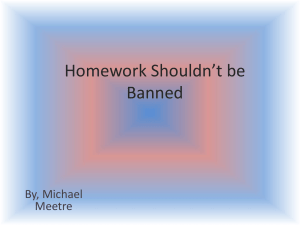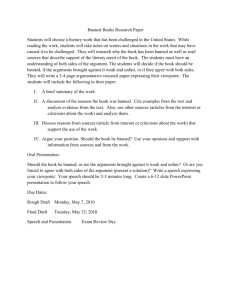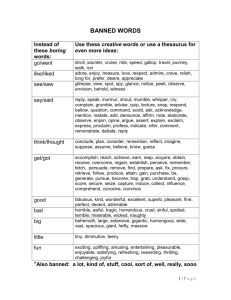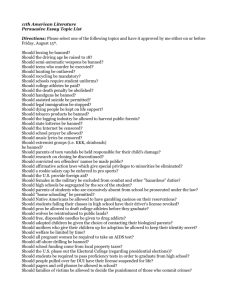Chapter. 10: Urban Policy pt 1
advertisement
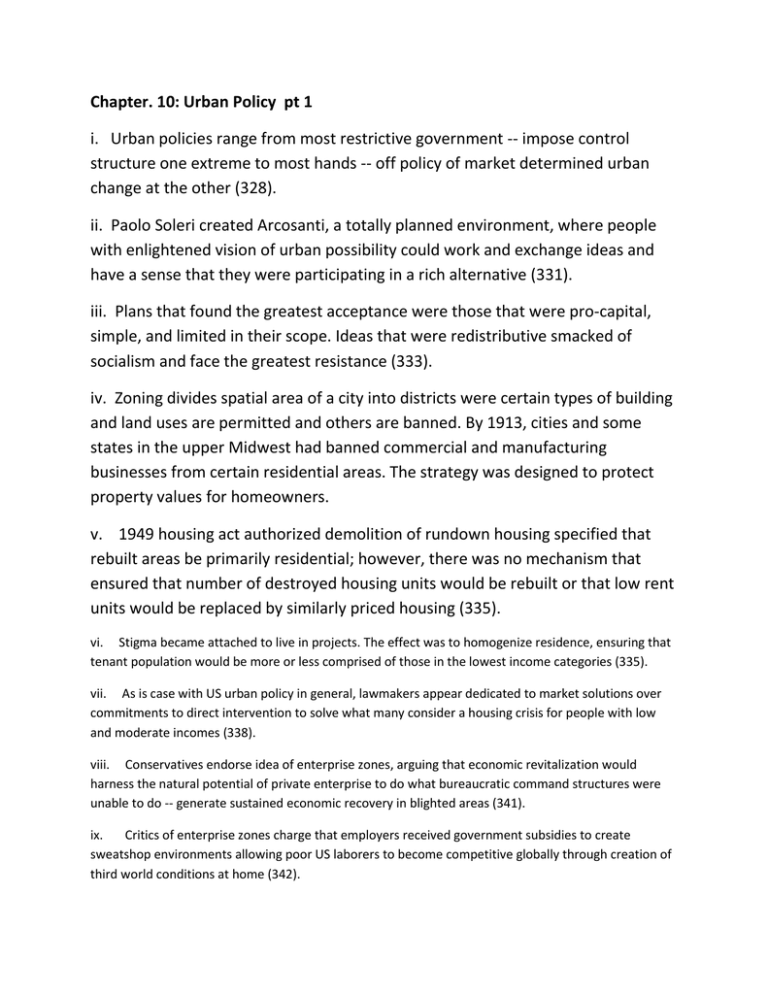
Chapter. 10: Urban Policy pt 1 i. Urban policies range from most restrictive government -- impose control structure one extreme to most hands -- off policy of market determined urban change at the other (328). ii. Paolo Soleri created Arcosanti, a totally planned environment, where people with enlightened vision of urban possibility could work and exchange ideas and have a sense that they were participating in a rich alternative (331). iii. Plans that found the greatest acceptance were those that were pro-capital, simple, and limited in their scope. Ideas that were redistributive smacked of socialism and face the greatest resistance (333). iv. Zoning divides spatial area of a city into districts were certain types of building and land uses are permitted and others are banned. By 1913, cities and some states in the upper Midwest had banned commercial and manufacturing businesses from certain residential areas. The strategy was designed to protect property values for homeowners. v. 1949 housing act authorized demolition of rundown housing specified that rebuilt areas be primarily residential; however, there was no mechanism that ensured that number of destroyed housing units would be rebuilt or that low rent units would be replaced by similarly priced housing (335). vi. Stigma became attached to live in projects. The effect was to homogenize residence, ensuring that tenant population would be more or less comprised of those in the lowest income categories (335). vii. As is case with US urban policy in general, lawmakers appear dedicated to market solutions over commitments to direct intervention to solve what many consider a housing crisis for people with low and moderate incomes (338). viii. Conservatives endorse idea of enterprise zones, arguing that economic revitalization would harness the natural potential of private enterprise to do what bureaucratic command structures were unable to do -- generate sustained economic recovery in blighted areas (341). ix. Critics of enterprise zones charge that employers received government subsidies to create sweatshop environments allowing poor US laborers to become competitive globally through creation of third world conditions at home (342). x. Using criteria of federal guidelines and real estate industry, housing should represent no more than 30% of households adjusted income. Using a simple formula, a $2100 rental requires an annual adjusted income of $75,000 (347). xi. Gentrification refers to any area that is undergoing a change in population from predominately lower – to higher – income residents (348-50). xii. The gated community may be read as a sign of generalized anxiety that attends inequality and entrenched divisions by class and race within society. A symptom not only a failure of urban policy to create order but also failure of market to maintain reasonable distribution and economic opportunity (351). xiii. One method of enumeration includes only those who were homeless on a given night, yielding a point in time count; the other includes everyone who was without shelter at some time during a given year, the period prevalence count (352-7). xiv. Today local ordinances articulate in greater detail that it is unlawful to stand, lie down, sleep, or relieve oneself in public spaces – in the name of removing nuisances that inconvenience other members of society and interfere with businesses (359) xv. Since 1970s there has been a renewed hostility toward "big government," fueled by political rhetoric charging that large-scale programs of government assistance do not work. Any policy is suspect if not based on individual initiative and utilization of market mechanisms to achieve socially desirable goals (360).
